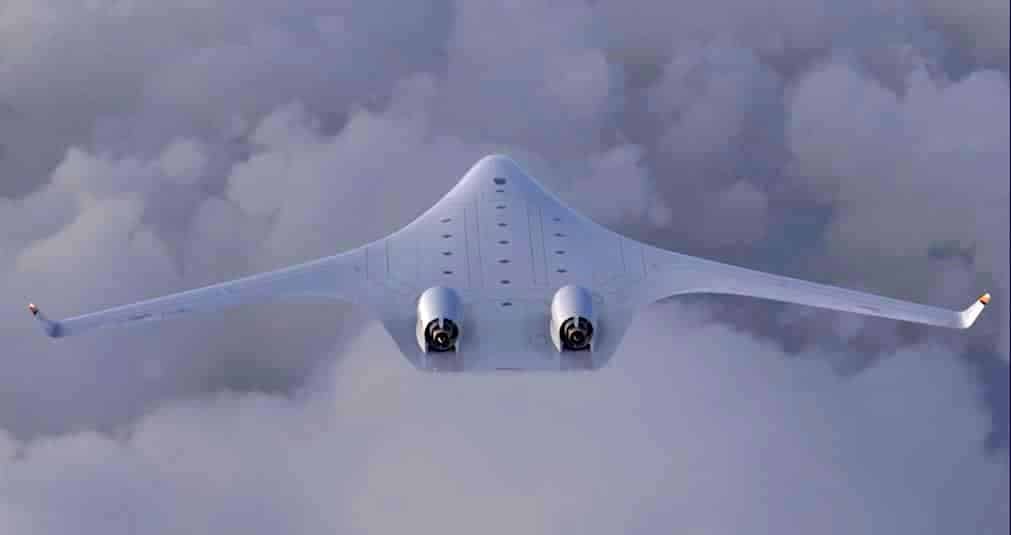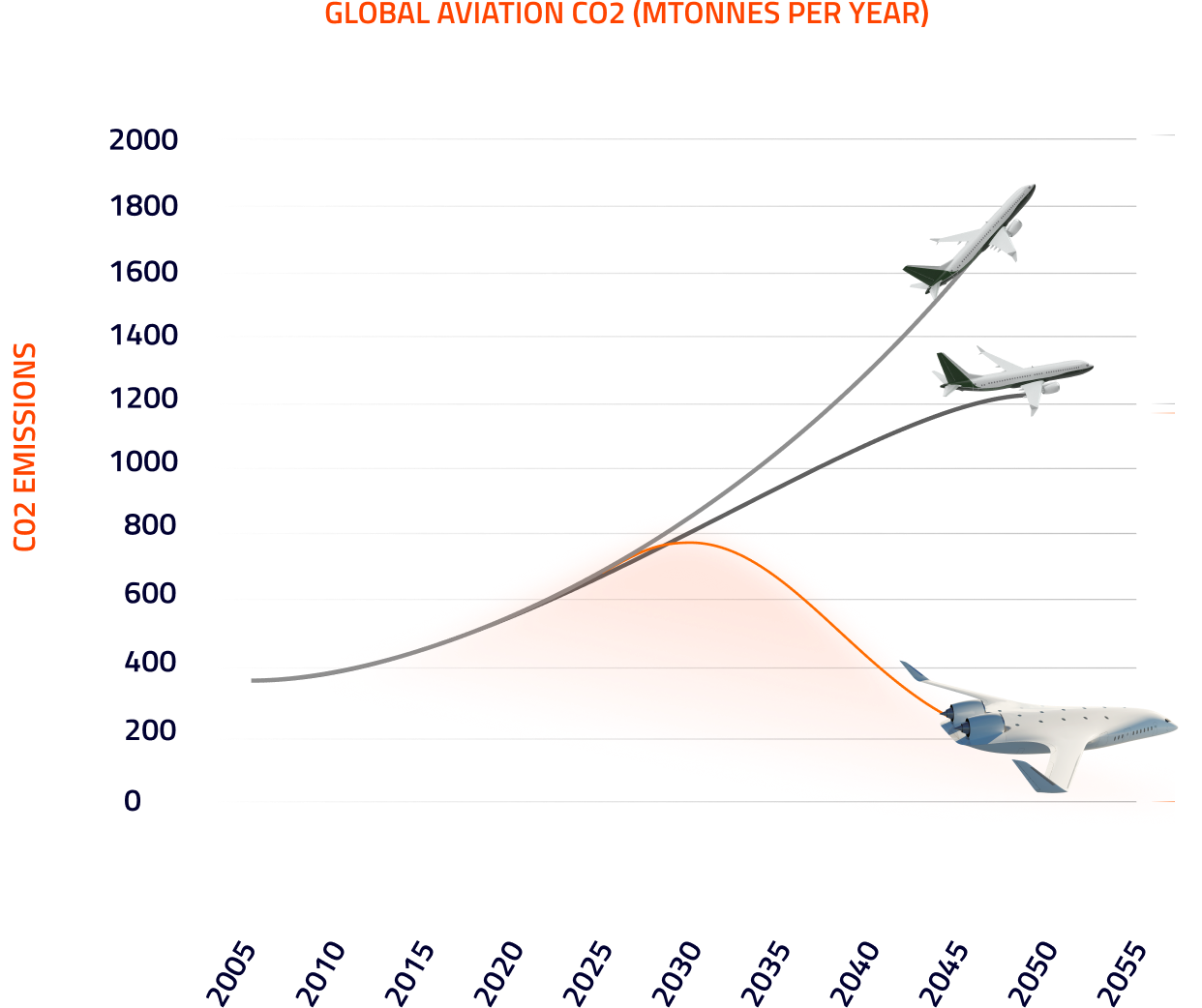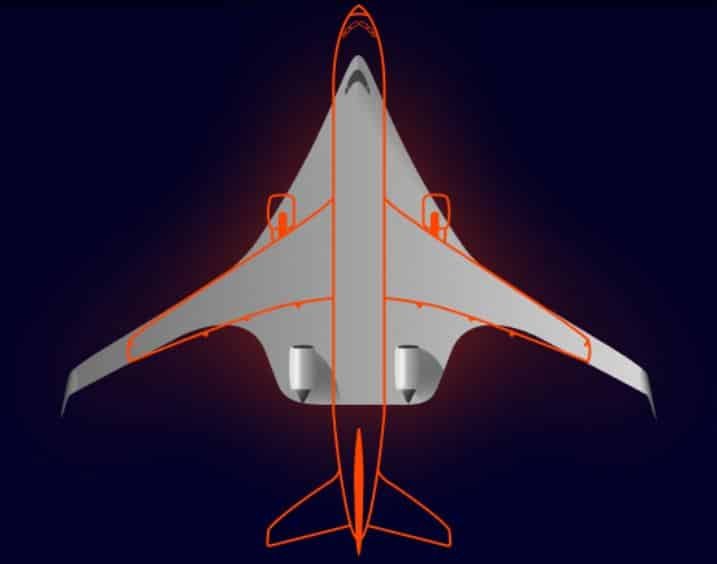JetZero Inc., a pioneering aviation startup, is boldly redefining the blueprint of commercial passenger aircraft by introducing a revolutionary low carbon, triangle-shaped design, resembling an enormous manta ray soaring through the skies.
JetZero‘s groundbreaking aircraft departs from the century-old norm of elongated tubes with wings and tail stabilizers. Instead, it boasts a shorter fuselage with more width, contributing substantially to its lift capabilities.
The elimination of the traditional tail is compensated by two engines mounted on the rear. This new design provides both power and stability to this innovative flying machine.
Introducing JetZero’s Flying Manta Ray
The distinct advantages of JetZero’s design, Blended Wing, become apparent when considering its notable features. It shows no clear dividing line between the plane’s wings and fuselage.
The aircraft’s triangular cabin accommodates three aisles, streamlining the boarding process and optimizing use of interior space. The aircraft also boasts a quieter fly, more stable flight, and a lighter overall structure.

With its more aerodynamic shape, it reduces drag and increases lift, which further burns less fuel.
This concept traces its roots back over a century when Germany’s Hugo Junkers conceptualized a flying wing. The designer recognized that traditional fuselages and tail fins don’t contribute to lift. Similar designs were explored during World War II but aviation industry leaders have been cautious in adopting such innovations.
Boeing and Airbus have explored futuristic designs embedding the cabin into the wings, but neither plans to implement it yet. JetZero, however, is willing to challenge the status quo.
The startup aims to initiate test flights of one-eighth-scale prototype in December. Then it will develop a full-scale version within four years.
JetZero’s innovation received a rejection from major airliners, saying that it’s not yet the right time for that. But the company believes that the time is now, with their CEO Tom O’Leary noting that they’re “happy to pave the way”.
Clearing the Path to Zero
The airliner market has been getting used to having just Boeing and Airbus in its wings. Plus, changing how planes fly and how things work on the ground is both time-consuming and expensive. Some companies attempted doing so, including Brazil’s Embraer, China’s Comac C919, Russia’s Sukhoi Superjet, and Bombardier Inc.
But they all failed.
Still, the aviation industry has to change its old ways to reach net zero emissions by 2050. More so that the industry emits increasing amounts of carbon dioxide annually. In 2022, aviation is responsible for emitting about 900 million tons of CO2.
Without changing the course with today’s aircraft, aviation will release more CO2 than Germany, U.K., and South Korea combined by 2040, at 1.8 billion tons.
JetZero aims to make the first move in changing that course with its Blended Wing aircraft. It can potentially cut planet-warming fuel consumption by half. It also reduces the cost barrier to entry for new propulsion technology, accelerating adoption while clearing the part to zero emissions.

The aviation company has formed partnerships to advance its mission of creating jets with low carbon emissions. It works with a renowned maker of B-2 bomber Northrop Grumman Corp. and Virgin Galactic’s WhiteKnightTwo. They will provide designing and constructing assistance in creating JetZero’s prototype.
Reshaping the Future of Flying
The startup’s ambitious initiative received a significant boost from the US Air Force with a commitment of $235 million.
If the roadmap unfolds as planned, JetZero will engage with regulatory bodies to secure certification for a midsize airliner by the early 2030s. Its passenger plane may pave the way for versions fit for military cargo transport and aerial refueling.
With that, Pentagon leaders find JetZero’s design concept to offer a potential to outpace China in technological advancements. Its low noise profile and extended range would be an advantage in future battles. Air Force Assistant Secretary Ravi Chaudhary emphasized the importance of supporting this innovation swiftly today.
Other aviation startups are also seeking to reshape commercial passenger jetliners to reduce emissions, including Archer Aviation and Joby Aviation. They are innovating small electric aircraft called “air taxis” that are in trials.
Other industry players are promoting the use of hydrogen for low carbon emission and sustainable aviation like the case of ZeroAvia. While major airlines are supporting sustainable aviation fuel to slash the industry’s emissions.
These innovative startups, including JetZero are facing a couple of challenges. These include limited government funding, unconvinced airlines and flyers, airport infrastructure’s conventional design, and changing passengers’ taste.
But the California-based startup believes that once their jets are flying up in the air, people will change their minds. O’Leary particularly said that:
“They need to see it at full scale, proving that there is this incredible reduction in fuel burn and emissions that can come from this airframe. To us, that’s everything.”
For one of JetZero’s investors and a strategic advisor, Build Collective, the triangle-shaped airplane is the “SpaceX of aviation”.
JetZero’s visionary approach underscores a commitment to reshape the future of air travel. It offers not just a novel design but a paradigm shift that could lead the aviation industry into a new era of efficiency, sustainability, and low carbon emissions.

